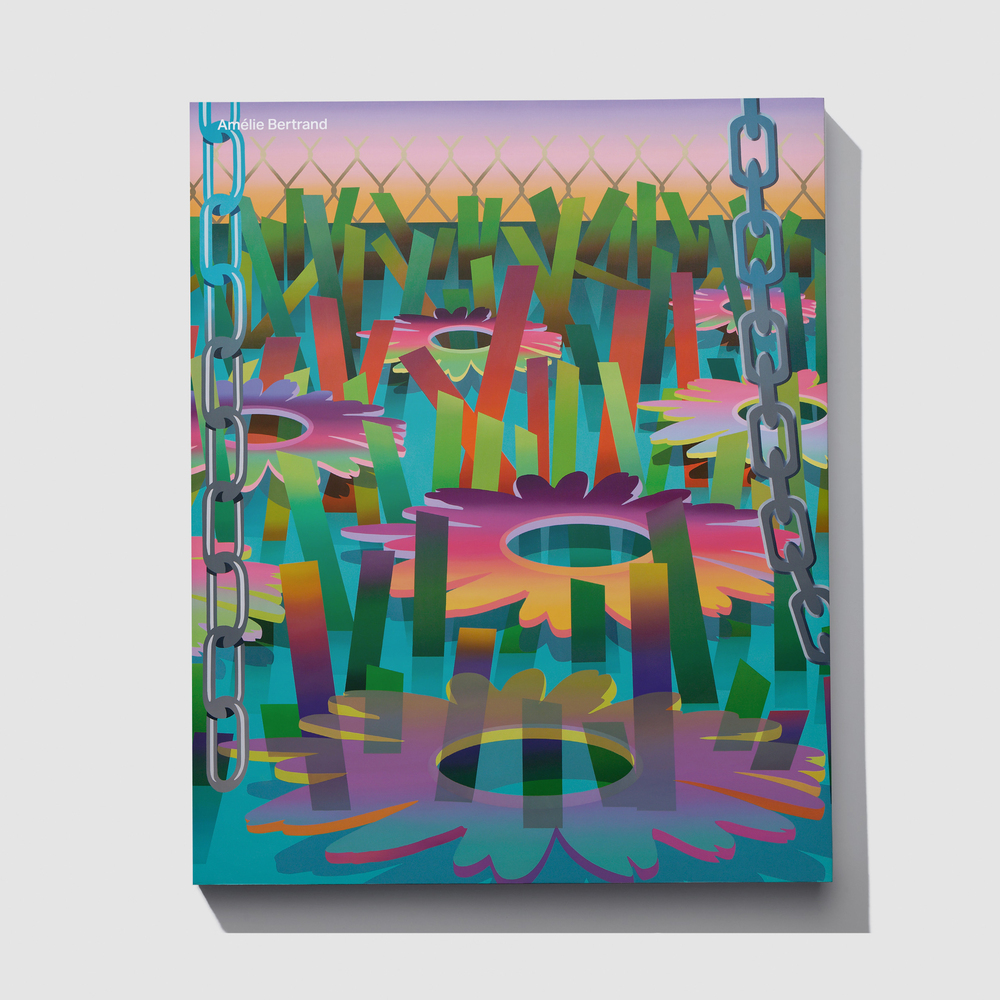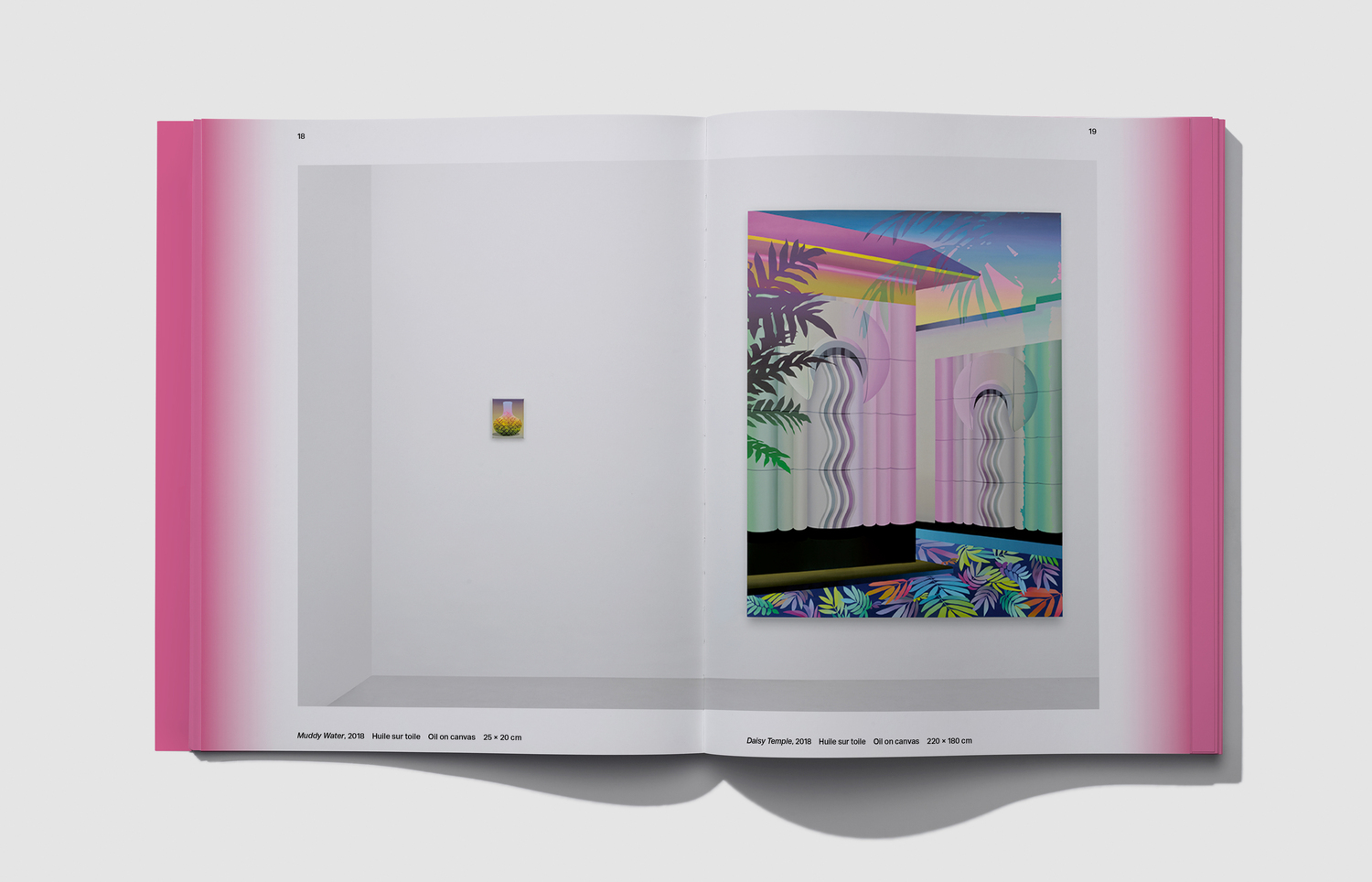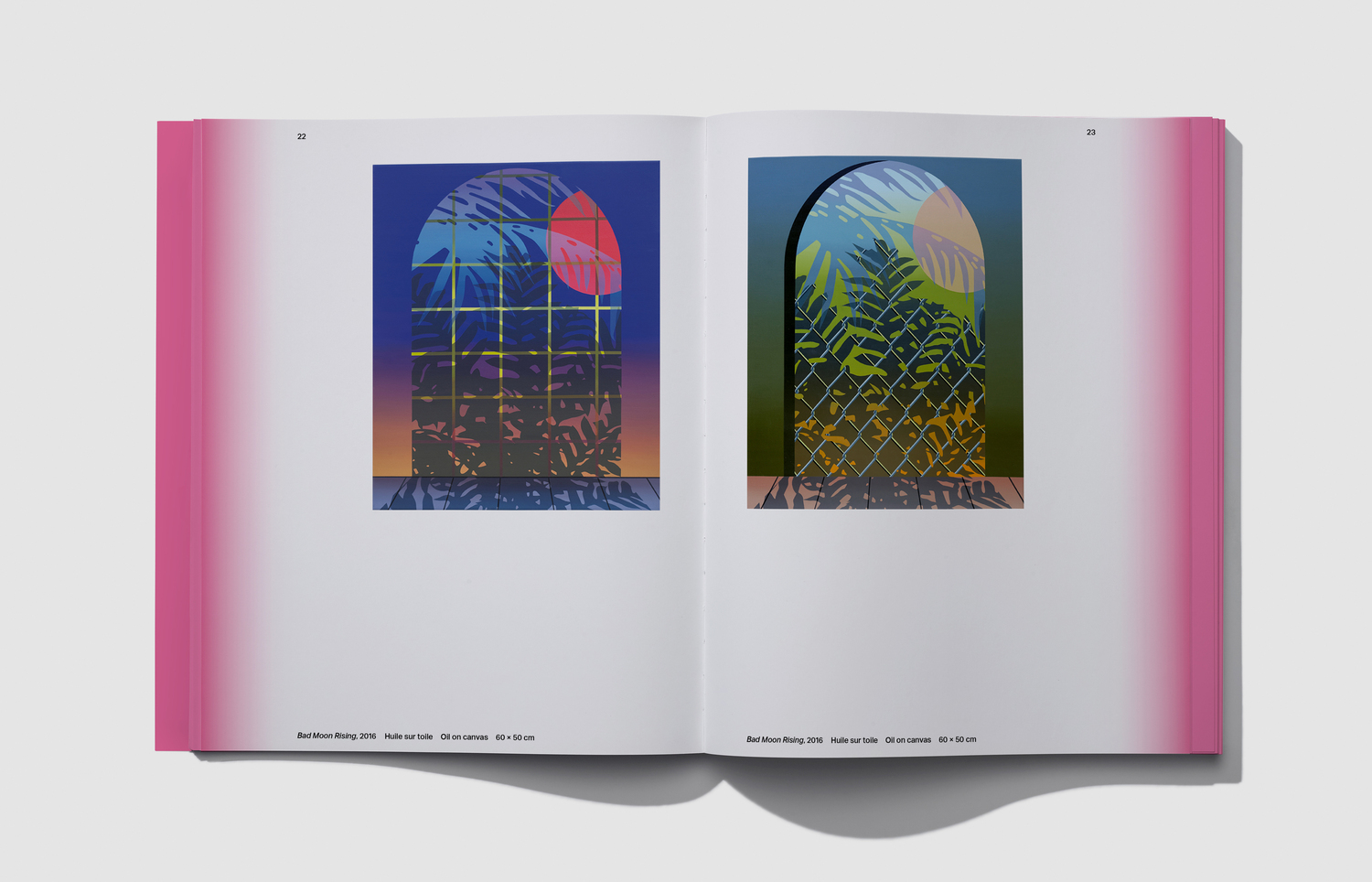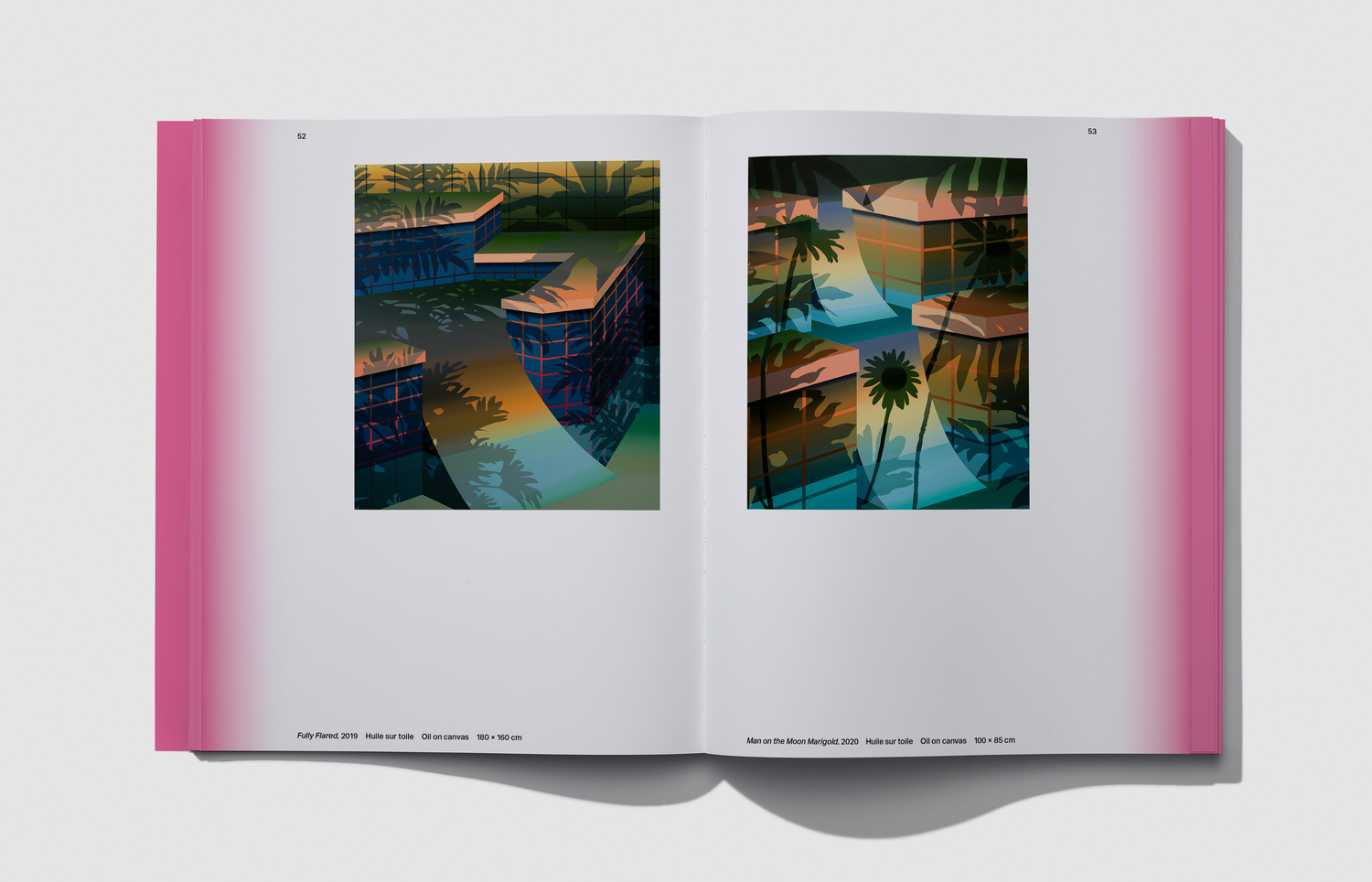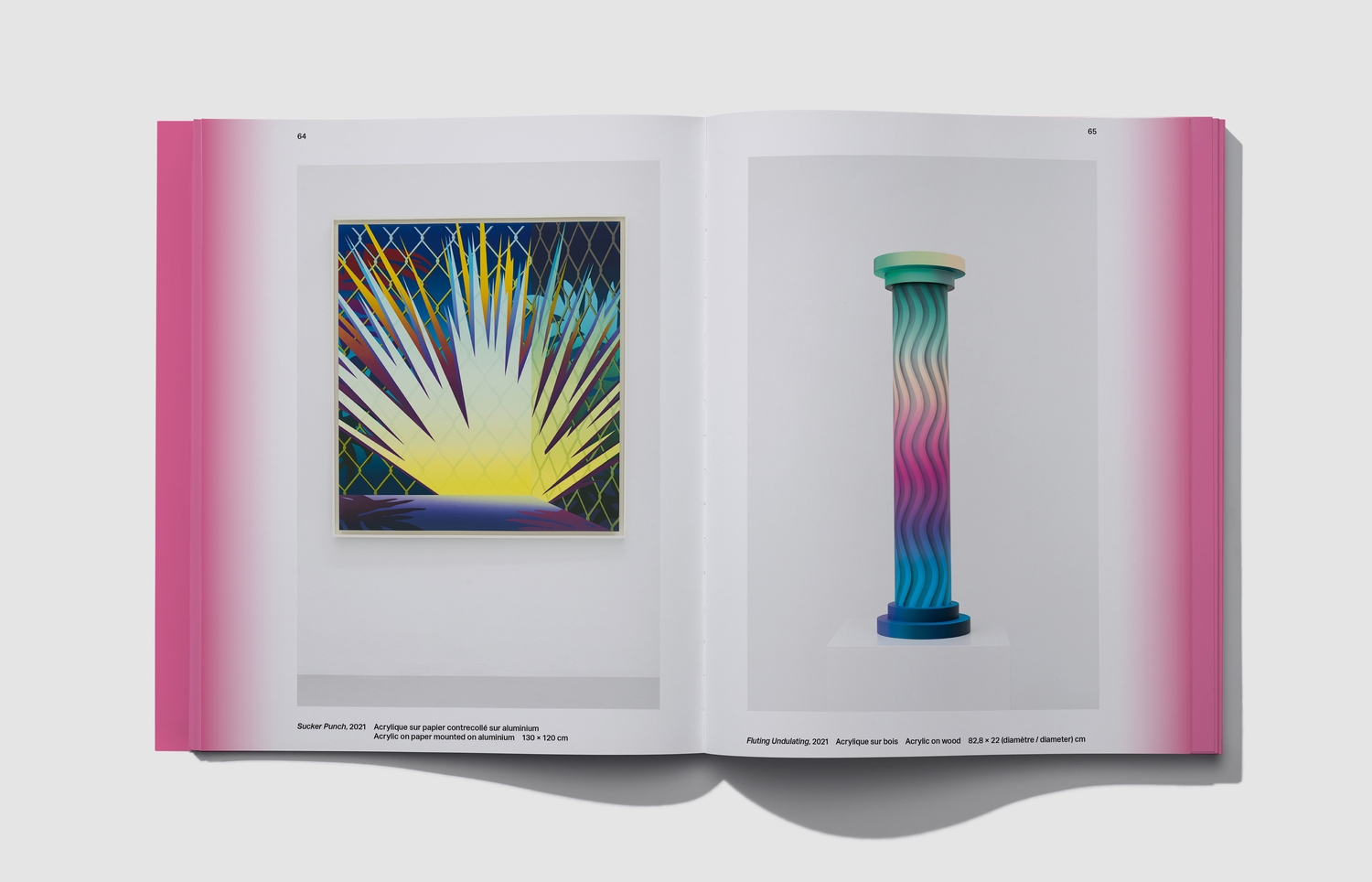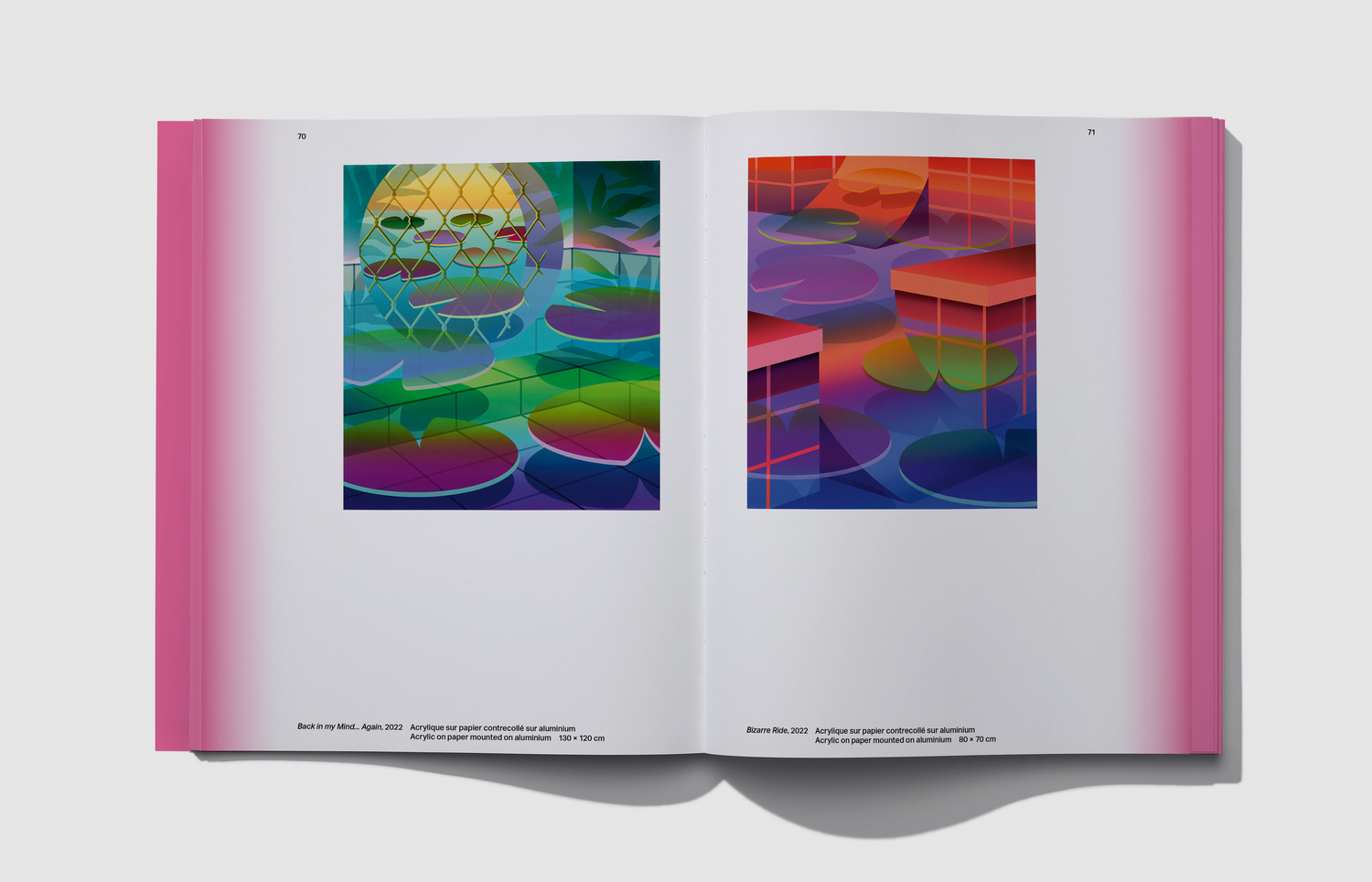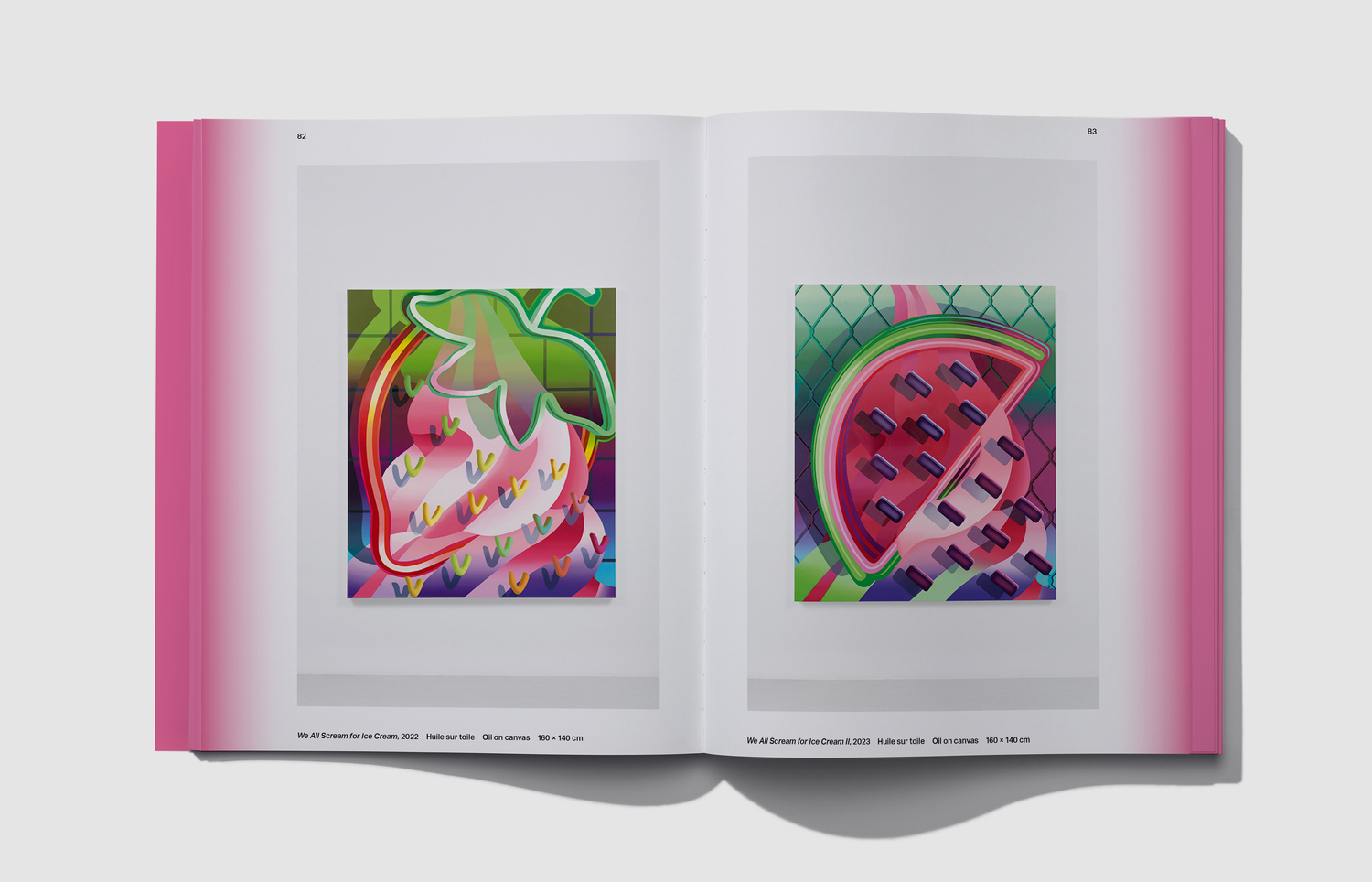Amélie Bertrand
Monographie, 2023
Semiose éditions
The Internet is not Amélie Bertrand's second nature but in short, her true nature. It is within this digital world, which nowadays has no parallel alternative, that this “Impressionist” painter of the 2000s, plunders forms and plucks textures, lighting, shadows and perspectives. She amasses meadows of synthetic grass, fields of plastic daisies, neon fruits... which she then translates into passionately sleek and illusory paintings.
This latest monograph dedicated to Amélie Bertrand—soberly titled “Amélie Bertrand”—reproduces works created since 2016, paintings on canvas and paper as well as her other projects, such as the Aubusson tapestry, lithographs for JRP Next and her painted columns, etc. This publication follows on from the fanzine Pleased to Meet You that appeared in 2016 (Semiose éditions) and has been produced in relation to her exhibition at the Matmut Centre d'Art Contemporain (spring 2023).
Brice Mattieussent—writer, translator, editor, professor of aesthetics and author of a number of critical essays—has written an analytical work concerning the oeuvre of Amélie Bertrand that seeks to explore her “enigmatic narrative power.” Julia Marchand, assistant curator at the Vincent van Gogh Foundation in Arles and founder of the Extramentale platform, pursues an intimate conversation with the artist, citing Maurice Denis, the Japanese Dekotora, Ed Ruscha and the night as inexhaustible sources of inspiration. Finally, Sophie Eloy, head documentarist at the Musée de l'Orangerie and exhibition curator, conducts an interview with the artist, in which the figure of Claude Monet makes a number of appearances.
“They are water lilies that have become forms. Yes, I think that's how it all came about. But when I was producing the drawing in which the first water lilies appeared, I didn't immediately think of Monet. Later on, though, I found it quite comforting to think that Monet had painted hundreds of them. Because he was able to exhaust every aspect of the water lily, you have to say oh yes, it was the right choice.” (Amélie Bertrand in conversation with Sophie Eloy).
